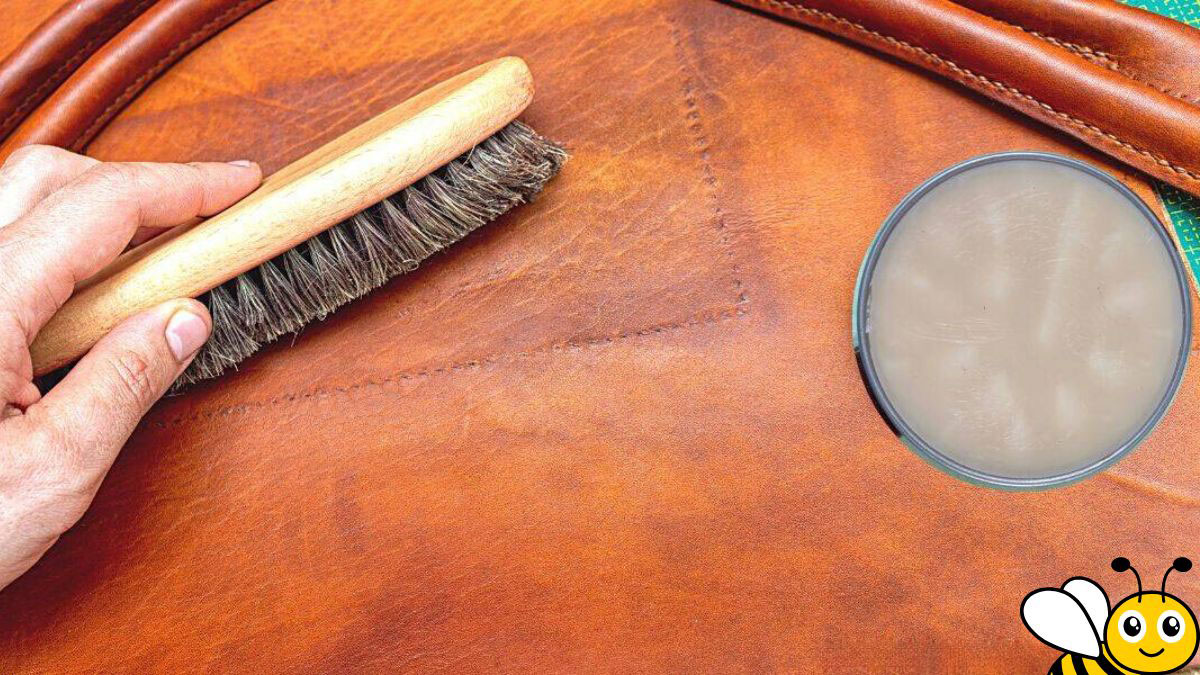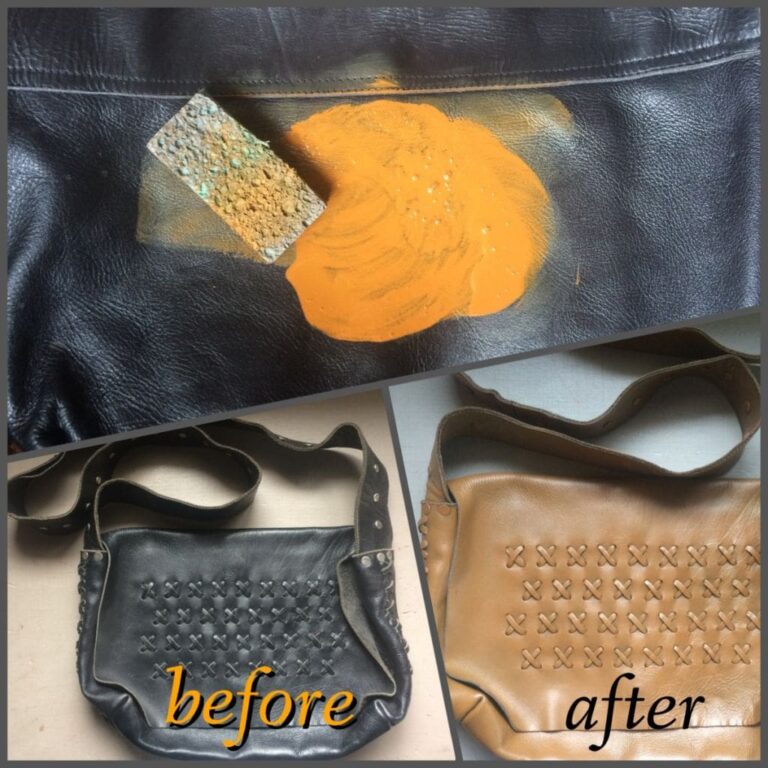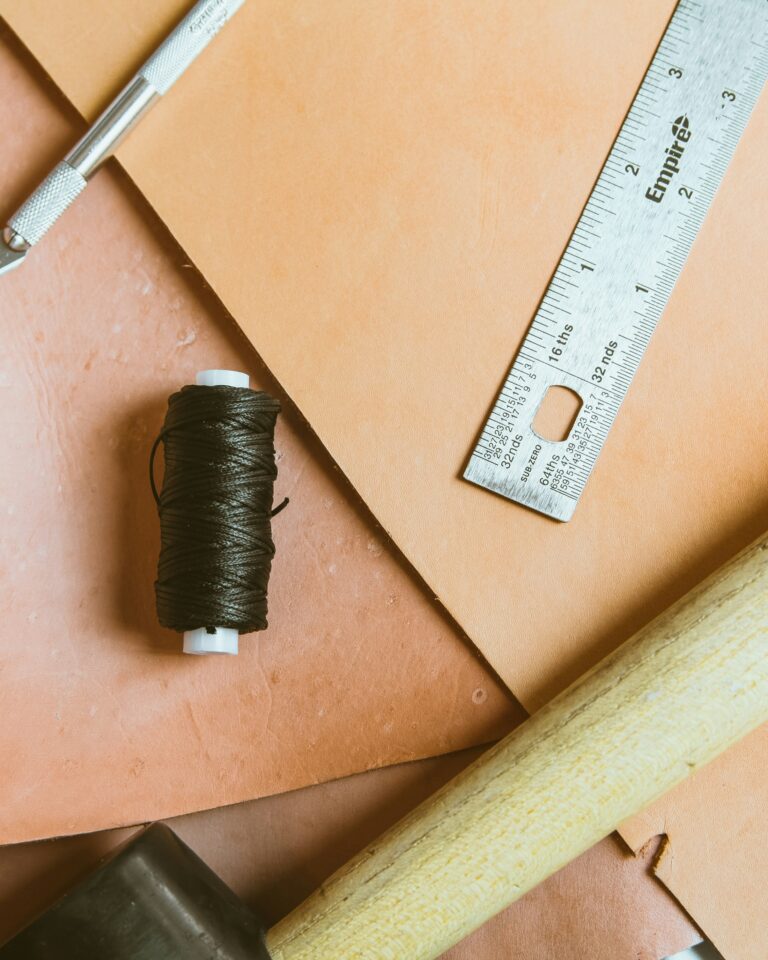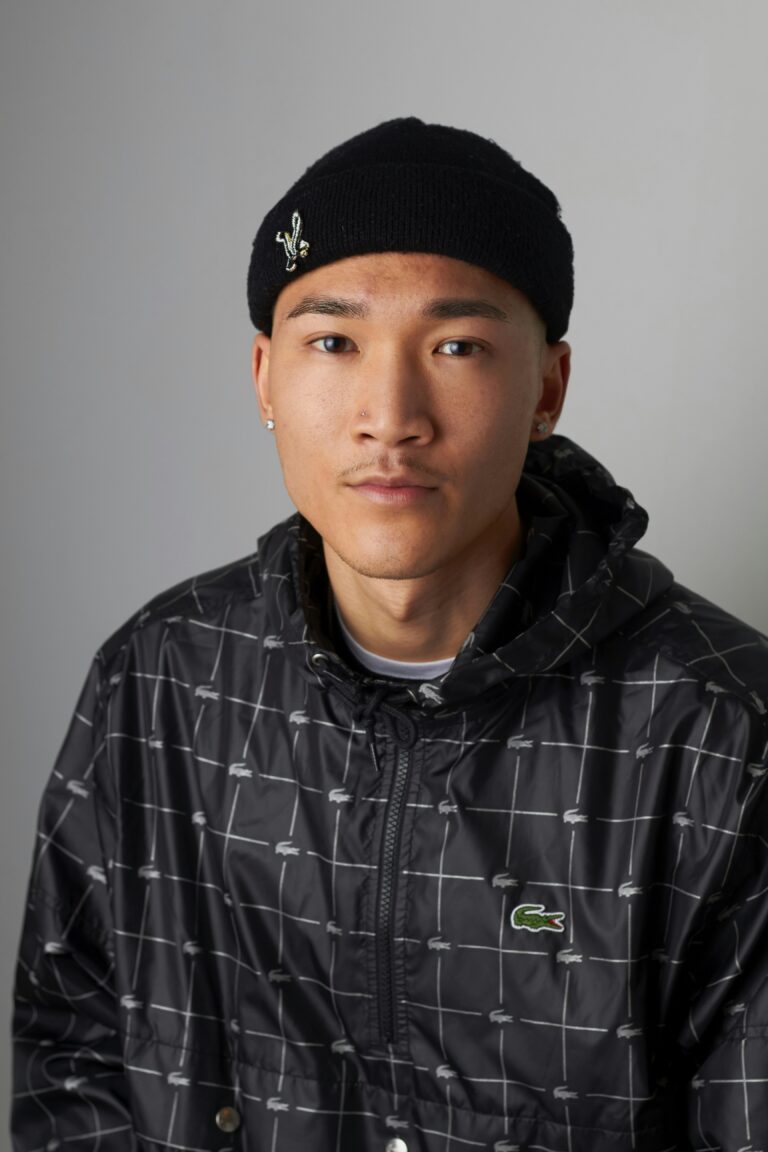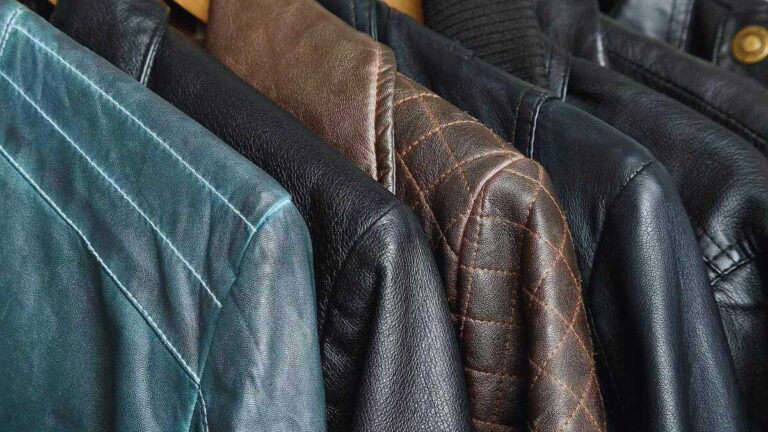Beeswax on Leather: Eco-Friendly Care for Long-Lasting Goods
When it comes to maintaining your leather goods, beeswax emerges as a natural powerhouse. Whether you’re a seasoned DIY enthusiast or just starting, beeswax offers an eco-friendly solution to preserve and protect your prized possessions. From shoes and belts to saddles and purses, leather items require regular care to prevent drying and cracking.
Applying beeswax to leather not only enhances its durability but also provides a layer of waterproofing. Those pesky raindrops and splashes won’t stand a chance as they roll right off the surface. Plus, beeswax helps retain the leather’s natural moisture, reducing the risk of excessive dryness.
Using beeswax is simple and effective, requiring only a small amount for a long-lasting finish. It’s a natural alternative to chemical-laden products, offering peace of mind while caring for your leather items. So, why not give your leather goods the tender loving care they deserve with a touch of beeswax?
Key Takeaways
- Eco-Friendly Leather Protector: Beeswax is a natural and sustainable option for preserving and protecting leather goods, free from harmful chemicals found in synthetic products.
- Waterproofing and Moisturization: It provides a water-repellent layer, preventing moisture from soaking in and helping retain the leather’s natural moisture, thus preventing drying and cracking.
- Enhanced Durability: Regular application of beeswax can extend the lifespan of leather items by reducing wear and tear and preventing premature cracking.
- Simple Application Process: Applying beeswax is straightforward, requiring minimal tools for effective results. It strengthens and enhances the appearance of leather, making maintenance easy and efficient.
- Considerations and Precautions: Users should test a small area for compatibility, apply thin layers to prevent buildup, and be aware of beeswax’s partial waterproof properties and potential darkening effect.
- Ongoing Maintenance: After beeswax treatment, leather goods should be regularly cleaned, stored properly, and monitored for signs of wear to maintain their condition and functionality.
Benefits of Using Beeswax on Leather
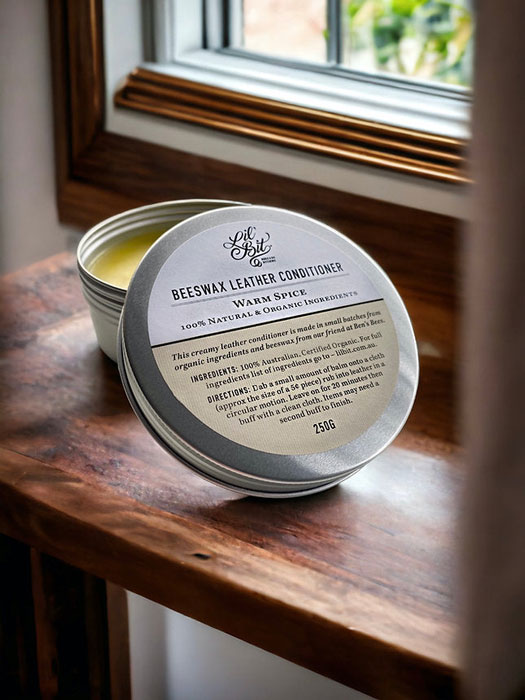
Waterproofing and Moisture Protection
Beeswax creates a natural water-repellent layer on the leather surface. Water beads off immediately, protecting leather from rain and spills. Its protective barrier ensures moisture doesn’t penetrate, keeping the leather dry.
Conditioning and Softening
Beeswax conditions and softens leather. It prevents drying and cracking by maintaining the leather’s natural moisture. Supple leather remains flexible and avoids stiffness over time.
Durability and Longevity
Applying beeswax significantly increases leather durability. It guards against wear and tear, reducing premature cracking and parching. Leather items, like shoes and boots, enjoy an extended lifespan with beeswax treatment.
Environmental Friendliness
Beeswax stands out as an eco-friendly option. It’s natural, free of harmful chemicals, and devoid of petroleum-based ingredients. This makes it a sustainable choice for those looking to care for leather responsibly.
Key Properties of Beeswax
Beeswax offers distinct advantages when used on leather, enhancing both its functionality and longevity. Its natural properties provide protection against moisture and aid in maintaining the material’s integrity over time.
Water Resistance
Beeswax effectively protects leather items from water. It’s insoluble in water, creating a barrier that prevents moisture from penetrating. This makes it a valuable alternative to chemical-based waterproofing sprays. When applied, beeswax forms a repellent layer, causing water to bead and roll off rather than soak in. Keep in mind, it doesn’t make leather completely waterproof, so avoid submerging items.
Preservation
Beeswax is integral in preserving leather’s condition. It retains the material’s natural moisture, preventing drying and cracking. By moisturizing and softening the leather, beeswax helps maintain the item’s texture and flexibility. Using beeswax regularly can significantly extend the lifespan of your leather goods by protecting them from daily wear and environmental factors.
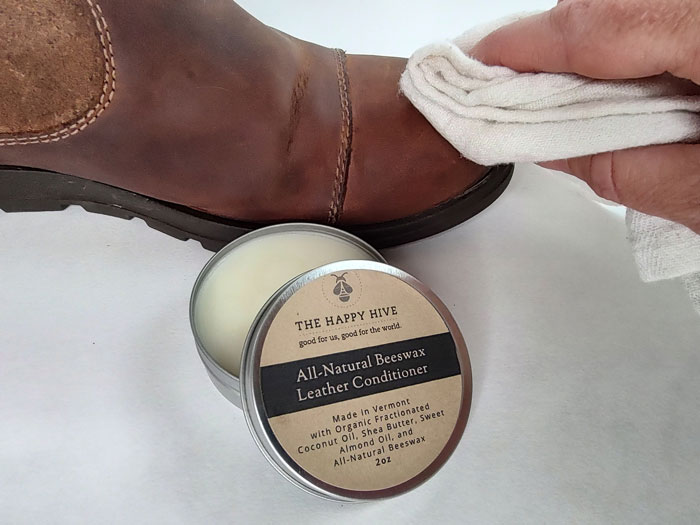
Preparing Your Leather for Treatment
Cleaning the Leather
Ensure the leather is clean and free of dirt before applying beeswax. Use a damp cloth to gently wipe away any surface dirt, mud, or contaminants. Let the leather dry completely, as remaining moisture can interfere with the absorption of beeswax.
Drying and Warming the Leather
Dry the leather thoroughly at room temperature, or slightly warm it to aid beeswax absorption. If the leather is cold, it can hinder the wax’s ability to penetrate evenly, affecting the treatment’s effectiveness.
Testing a Small Area
Test a small, inconspicuous area when using beeswax on colored or dyed leather. This step helps ensure that beeswax doesn’t alter the leather’s color or finish.
Removing Old Finishes
Remove any existing finish or old wax from the leather to allow new beeswax to adhere properly. This ensures the conditioner penetrates the leather surface effectively, providing optimal results.
By following these preparation steps, you enhance leather treatment, ensuring it nourishes and protects effectively.
Applying Beeswax to Leather
Applying beeswax to leather requires the right tools and a systematic approach for optimal results. Accurate preparation and application enhance the durability and appearance of leather items.
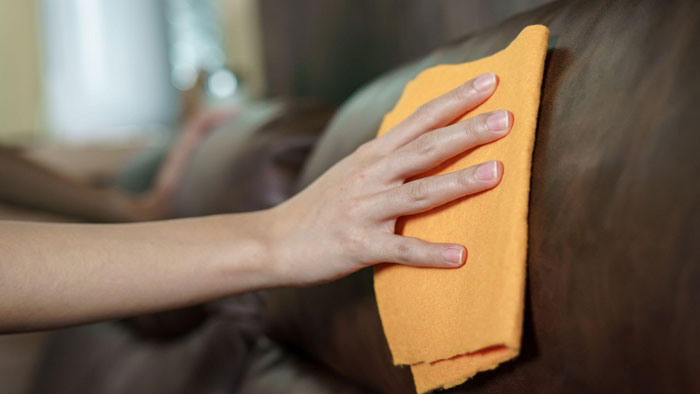
Tools and Materials Needed
- Beeswax: Use pure beeswax or a blend with oils like coconut, shea butter, and sweet almond.
- Clean, Soft Cloth or Rags: Ensure they’re lint-free for smooth application.
- Small, Soft Towel: Aids in even application of beeswax.
- Optional Heating Tool: A hairdryer or old iron can help warm the leather.
- Clean, Dry Leather: Remove all dirt and mud before starting.
- Prepare the Leather Surface:
- Clean the leather thoroughly, ensuring it’s free from dirt and mud.
- Make sure it is dry. Moisture can impede the absorption of beeswax.
- Heat the Leather (Optional):
- If desired, gently warm the leather using a hairdryer. This step enhances beeswax absorption and helps the product spread more easily.
- Apply Beeswax:
- Take a small amount of beeswax. Remember, only a modest amount is needed.
- Use the soft towel to rub the beeswax into the leather in circular motions, ensuring an even coat.
- Optional Heating Step:
- After application, use a hairdryer or old iron to slightly heat the leather, helping the wax melt and penetrate the surface more effectively.
- Let It Sit:
- Allow the beeswax to sit and be absorbed. This process may take several hours.
- Buff the Leather:
- Once the wax has fully penetrated, use a clean cloth to buff the leather, enhancing the sheen and ensuring no excess wax remains on the surface.
By following these steps, you ensure your leather items are adequately protected and maintained, extending their lifespan and enhancing their visual appeal.
Tips for Maintaining Leather After Beeswax Application
Maintain leather’s appearance and functionality by following these guidelines post-beeswax treatment.
Regular Cleaning
- Frequency: Clean the leather periodically to remove surface dirt. For frequently used items like shoes or belts, clean every two to three weeks.
- Method: Use a damp cloth to gently wipe away debris without soaking the leather, which avoids undermining the wax coating.
Avoid Prolonged Sun Exposure
- Impact: Sunlight can fade leather and dry it out even with beeswax protection. Avoid leaving leather goods in direct sunlight for extended periods.
Proper Storage
- Condition: Store leather in a cool, dry place, ideally at room temperature. Direct contact with water or moisture should be avoided.
- Ventilation: Ensure the storage area is well-ventilated to prevent mold growth.
Reapplication Schedule
- Intervals: Reapply beeswax every few months or when leather starts to show signs of dryness. Regular application helps maintain a consistent protective barrier.
- Signs: Watch for lack of luster or stiffness as indicators for when to reapply the beeswax.
Spot Treatments
- Minor Scuffs: Buff scuffs gently with a soft cloth. Additional beeswax can be applied for deeper marks; allow to absorb before buffing again.
- Test Areas: On colored leather, test a small area to prevent alterations in appearance.
Avoid Hazardous Substances
Avoid harsh cleaning agents that can strip the beeswax and damage the leather. Stick to mild cleaners designed for leather care.
- Checkups: Inspect your leather goods for signs of wear and tear every few months. Address minor damages promptly to prevent deterioration.
- Repairs: Attend to any stitching or structural issues as soon as they’re noticed to maintain integrity over time.
Implementing these practices can keep your leather items supple and well-maintained, ensuring their longevity and aesthetic appeal after beeswax application.
Potential Drawbacks of Beeswax on Leather
Beeswax offers multiple benefits for leather care, but there are potential drawbacks to consider.
Compatibility and Testing
Before applying beeswax, test it on a small, inconspicuous leather area. This check helps determine compatibility and prevents adverse reactions, such as color or texture changes.
Buildup and Uneven Application
Beeswax might leave a waxy residue if applied too thickly. Apply a thin, even layer to avoid buildup, which can stiffen the leather. This is particularly crucial if using beeswax furniture polish, which isn’t recommended for leather because it may lead to uneven texture.
Types of Leather
While beeswax is generally safe for types of leather like genuine, full-grain, and top-grain, testing is still important. For these types, proper application ensures safe use without compromising the leather’s integrity.
Darkening Effect
Beeswax, especially when combined with oils like coconut oil, can darken leather. If this is a concern, conduct a preliminary test on a small area before full application.
Partial Waterproofing
Although beeswax offers waterproofing, it doesn’t make leather completely waterproof. Avoid submerging leather items in water to prevent damage.
Melting Point Considerations
With a low melting point of 147°F (63.8°C), beeswax might soften in high temperatures. Overheating the wax during application could hinder its effectiveness.
Taking these factors into account helps mitigate potential issues when using beeswax on leather, ensuring it enhances your items without adverse effects.
Conclusion
Beeswax offers a natural and sustainable way to care for your leather goods, enhancing their durability and visual appeal. By following the recommended preparation and application steps, you can effectively protect your leather items from moisture and wear. Regular maintenance, including cleaning and reapplication, ensures your leather remains supple and long-lasting. While there are a few considerations to keep in mind, such as testing for compatibility and avoiding excessive buildup, beeswax remains a reliable choice for preserving your leather’s integrity. Embrace this eco-friendly option to maintain the beauty and functionality of your leather items for years to come.
Frequently Asked Questions
What are the main benefits of using beeswax on leather goods?
Beeswax offers several benefits for leather, including enhancing its durability, providing waterproofing by allowing water to bead off, and conditioning the leather to maintain its moisture and flexibility. It helps prevent issues such as drying and cracking, ultimately extending the lifespan of leather items. Additionally, beeswax is an eco-friendly and sustainable choice, free from harmful chemicals, making it a responsible alternative for leather care.
How often should I apply beeswax to leather?
It is recommended to apply beeswax every few months, or when signs of dryness appear on your leather goods. Regular application helps maintain the leather’s natural moisture and flexibility, safeguarding it from wear and environmental factors, thereby extending its lifespan and keeping it in good condition.
Can beeswax completely waterproof leather items?
Beeswax can create a water-repellent barrier that helps water bead off the leather’s surface. However, it does not make leather completely waterproof. It’s important to avoid submerging leather items, as beeswax provides only partial waterproofing, protecting against moisture penetration rather than complete immersion.
Is it necessary to clean leather before applying beeswax?
Yes, cleaning the leather before applying beeswax is essential. Removing dirt and contaminants ensures the leather is in optimal condition to absorb beeswax. Ensure the leather is completely dry before application, which allows the wax to adhere better and provide effective protection and conditioning.
Will beeswax change the color or finish of leather?
Beeswax can potentially darken leather, especially when combined with oils. Testing a small, inconspicuous area before full application is crucial to ensure compatibility and avoid unwanted changes in color or finish. This practice is particularly important for colored or dyed leather.
Can beeswax be applied to all types of leather?
While beeswax is generally safe for use on various types of leather, testing is important to ensure compatibility and avoid potential issues like adverse reactions or unwanted changes in texture. It’s best to apply beeswax sparingly and observe how the leather responds before full treatment.
What precautions should be taken during the application of beeswax?
During application, avoid applying thick layers of beeswax to prevent buildup that could stiffen the leather. Use circular motions and a modest amount to ensure even coverage. Be mindful of beeswax’s low melting point; avoid overheating during application to maintain its effectiveness.
How can I maintain leather after applying beeswax?
Regular maintenance involves cleaning the leather with a damp cloth every two to three weeks to remove surface dirt. Store items in a cool, dry place away from sun exposure. Reapply beeswax periodically and use spot treatments for minor scuffs to keep leather supple and well-maintained. Avoid harsh cleaning agents to prevent damage.

